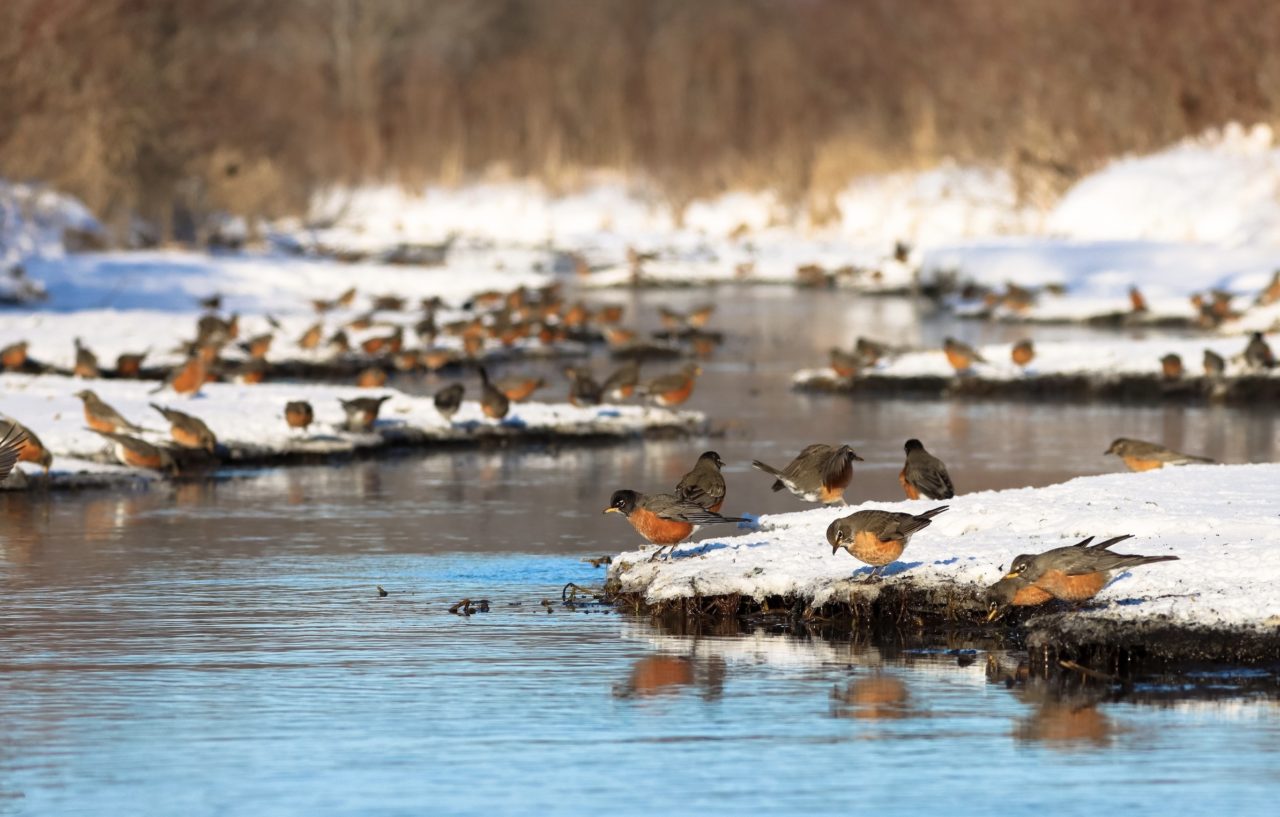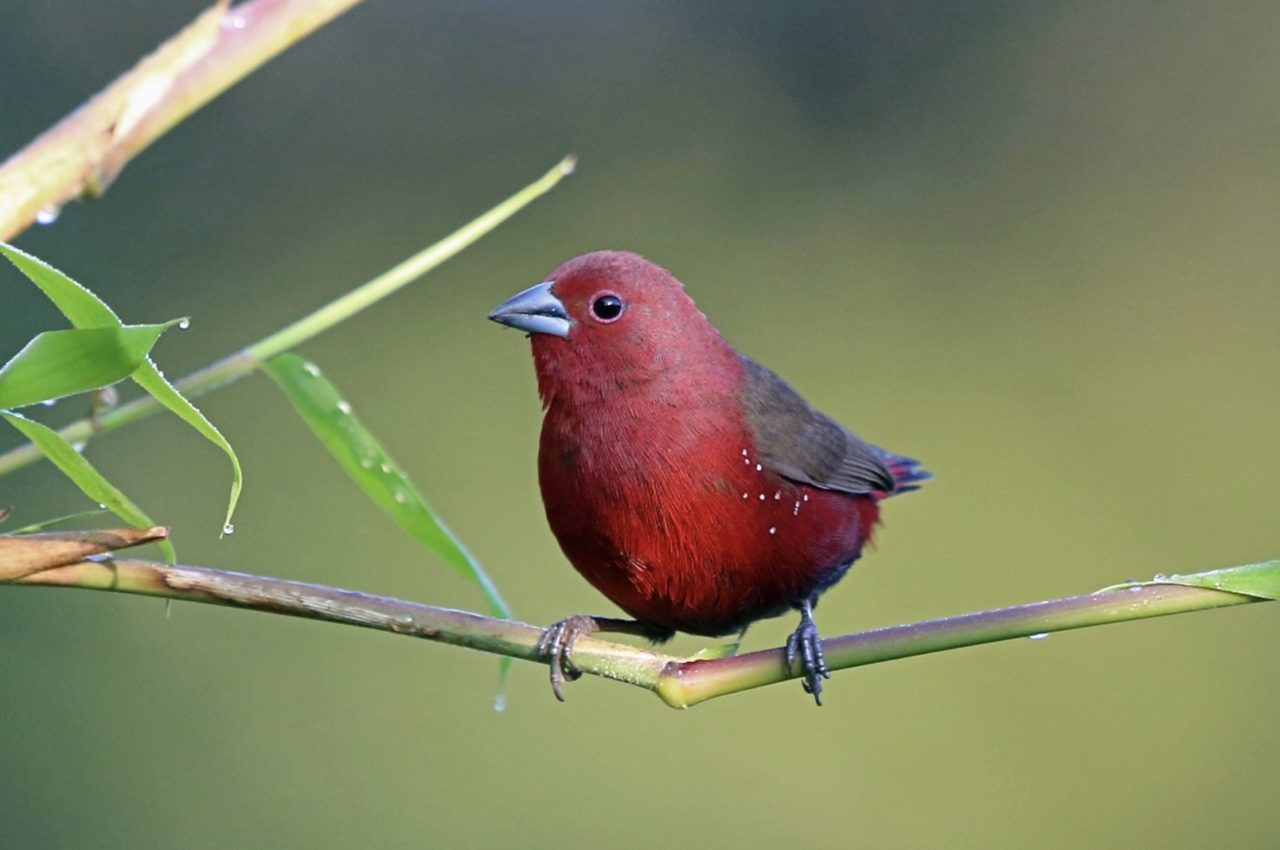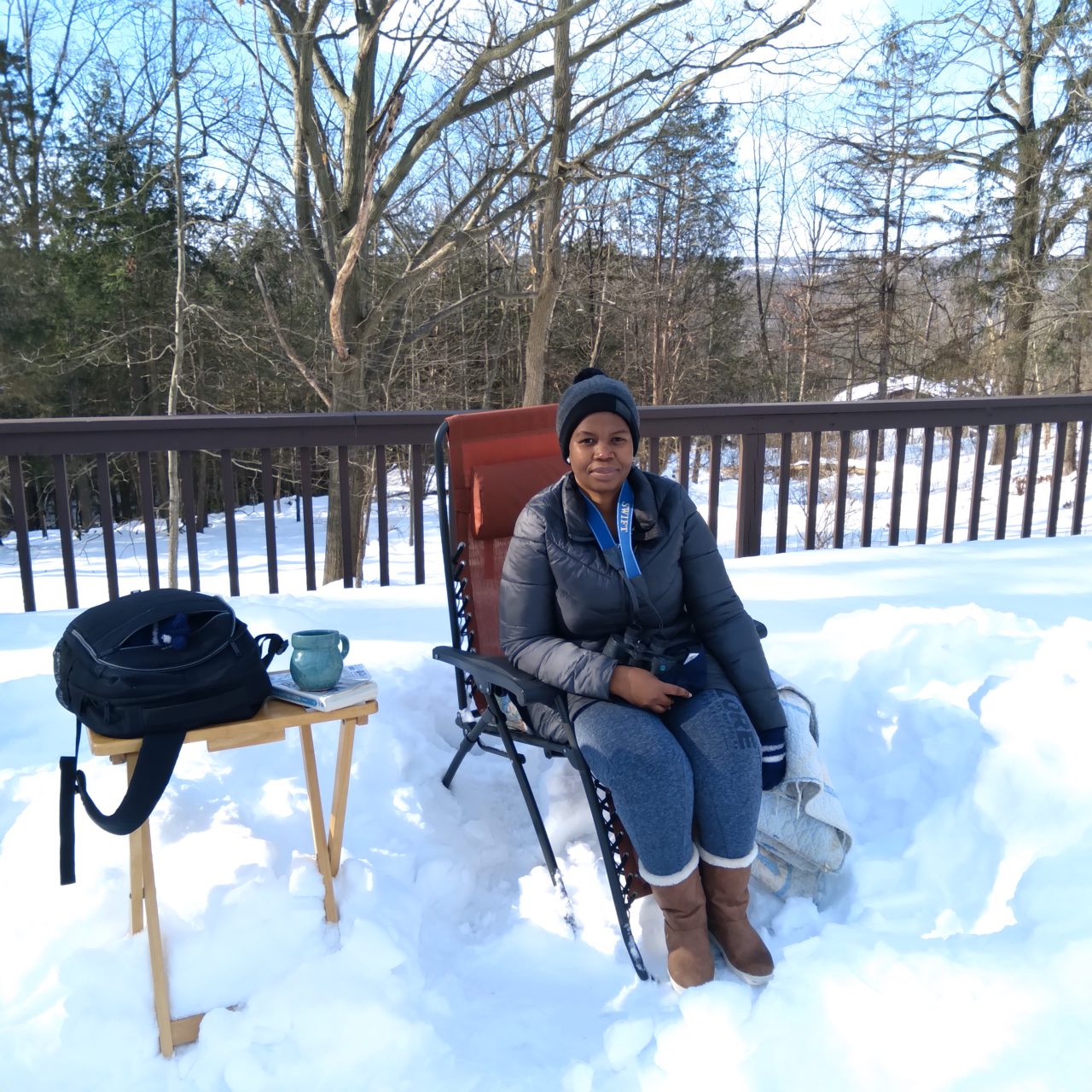First Birding Experience in America
By Mofenyi Keddy Moleofi Hubert Humphrey Fellow at Cornell University, BirdLife Botswana
On Saturday February 13, 2021, I had my first experience in contributing to conservation and monitoring of wild birds in the United States as a Humphrey Fellow. I participated in a public event called the Great Backyard Bird Count in the town of Ithaca, New York. The Great Backyard Bird Count is an activity organized by Cornell University Lab of Ornithology, the National Audubon Society and Birds Canada. The event is open to the public to participate in bird counting over a 4-day period by watching each day for a minimum of at least 15 minutes. As a Humphrey Fellow who works for Birdlife Botswana, I viewed the birding activity as a great experience for introducing beginners and visitors to many of the birds of America. My participation in the event also contributed to giving scientists insight into how birds are surviving, growing, and adapting to climate change.
My first experience birding in North America was rewarding and exciting.
I took part in the event with the assistance of Linda Gasser, a Cornell lecturer, the Friendship Partner Coordinator for the Humphrey Program and an amateur birder. We performed the activity at Linda’s home backyard garden where there was a suet feeder, and two seed feeders, and a variety of seeds by type and size to attract all kinds of birds. The location is on a hillside above Cayuga Lake on the eastern side. It is surrounded on two sides by woodlands and a deep gorge, and by more meadow-like open space on a third side. This made birding more exciting because a variety of birds – those who prefer woodlands, brush, more open areas, or running water – may visit the bird feeder for various foods and the nearby gorge or lake for water.

What a new experience it was to go birding on a snowy winter day with a very cold morning temperature of 8°F compared to the warmer 69°F temps I am used to in Botswana! We positioned ourselves on a snowy deck sitting in chairs bundled up in gloves, hats, boots, & blankets, etc. to keep warm as we quietly watched the birds coming and going and recorded their visits to the feeders. After about five minutes, the first birds to visit the feeder and nearby trees were Blue Jays; then came Black-capped Chickadees, Tufted Titmice, two different Woodpeckers, Red-breasted Nuthatches, House Finches, and, surprising us both, a flock of about 17 American Robins among other birds—all pretty new to me. In total, we monitored for 40 minutes and recorded a total of 32 individual birds of eight species that visited the feeder during that time. We did not record the species we could only hear by calls because we were not well-enough versed with these. We submitted our results online using the great Lab of Ornithology apps eBird and Merlin to join the bird lists of those submitted by other participants from all over the world and managed by the event coordinators.
The most exciting sighting of the day was the sudden arrival of a flock of American Robins that visited the trees next to the feeder. Generally a migrating bird species which is known for eating worms and moves to the southern US and Mexico during the cold season, it seemed the sighting was unusual for such very cold & icy weather. According to Linda, the robins are usually seen during much warmer times in Ithaca and when sighted are alone or in pairs rather than flocks and are viewed as a first sign of spring coming. Perhaps this sighting such as ours might signal that climate change is real and it is happening, though we also learned that robins are hearty birds who do sometimes overwinter successfully, moving around in flocks for warmth and food sourcing to survive.

It was intriguing to find out that birds in America can seem very different during winter, either due to altered coloring, or puffing up their feathers and looking bigger than their usual size to help themselves keep warmer. An example for me was a sighting of a House Finch which looked bigger than the normal African Firefinch I have seen in Botswana because it was puffed-up sitting on a branch. One of the Robins did this as well, while we drank hot cocoa to keep warm.
My first experience birding in North America was rewarding and exciting. I enjoyed comparing the birds I observed in the cold here to those at home in warmer Botswana. I also very much look forward now to getting out and about in the spring to watch the migration of birds returning northward to this location & being able to identify more local species and make comparisons in warmer weather. What a great citizen-science opportunity to engage in!
Stay connected to the Great Backyard Bird Count.
By subscribing to stay connected to the Great Backyard Bird Count, you agree to receive communications from The Cornell Lab, Audubon, and Birds Canada. You may unsubscribe from any of the organizations' communications at any time.

